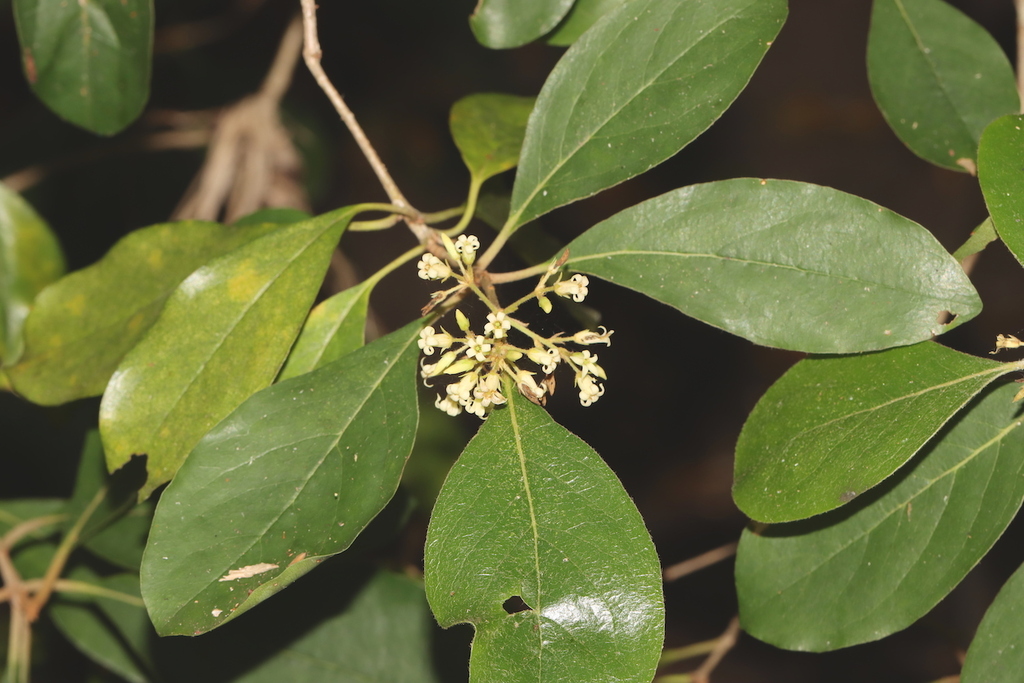
On our June outing at Cleveland Creek, we noticed clusters of tiny creamy-white flowers (photo above) on a small tree that presented an ID challenge for most of us. Thanks to John for providing the answer: Pittosporum tinifolium.
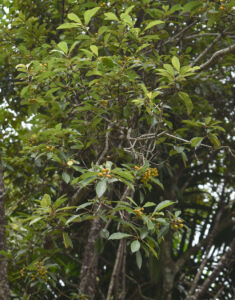
Pittosporum tinifolium (Pittosporaceae) is one of several trees commonly called Rusty Pittosporum. This attractive species was previously considered a variety of the widespread rusty-leaved pittosporum complex and named P. ferrugineum subsp. linifolium. Its separation as a species and the correction of ‘linifolium‘ to ‘tinifolium‘ is explained here: https://www.qld.gov.au/__data/assets/pdf_file/0020/69041/cayzer-chandler-austrobaileya-v10s1-p205-206.pdf
Identifying features are described by Cayzer and Chandler (see PDF linked above) as follows:
Leaves elliptic to almost orbicular, thick-coriaceous, upturned, apices rounded or acute; inflorescences multi-flowered stalked umbels exserted well past surrounding foliage. Common and endemic
to coastal areas south of Cooktown, in Cook, North Kennedy and Port Curtis districts, Queensland.
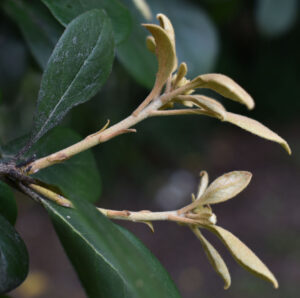
Older leaves of Pittosporum tinifolium are almost hairless/smooth (‘glabrous’ is the proper term) and the ‘rusty’ common name refers to the new growth covered in fine rusty hairs (photo above).
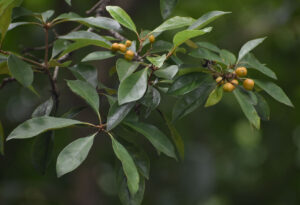
The woody fruits of Pittosporum tinifolium are initially green, becoming yellow to orange (photo above) before splitting open at maturity (photo below).
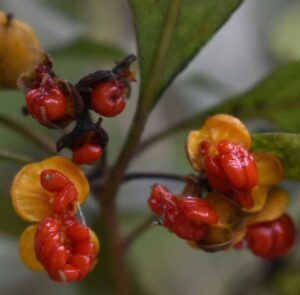
The genus name Pittosporum is derived from two Greek words meaning pitch (sticky) and seed. Pittosporum tinifolium fits that idea nicely with its bright red, sticky seeds displayed after the orange-coloured seed capsules split open (photo above).